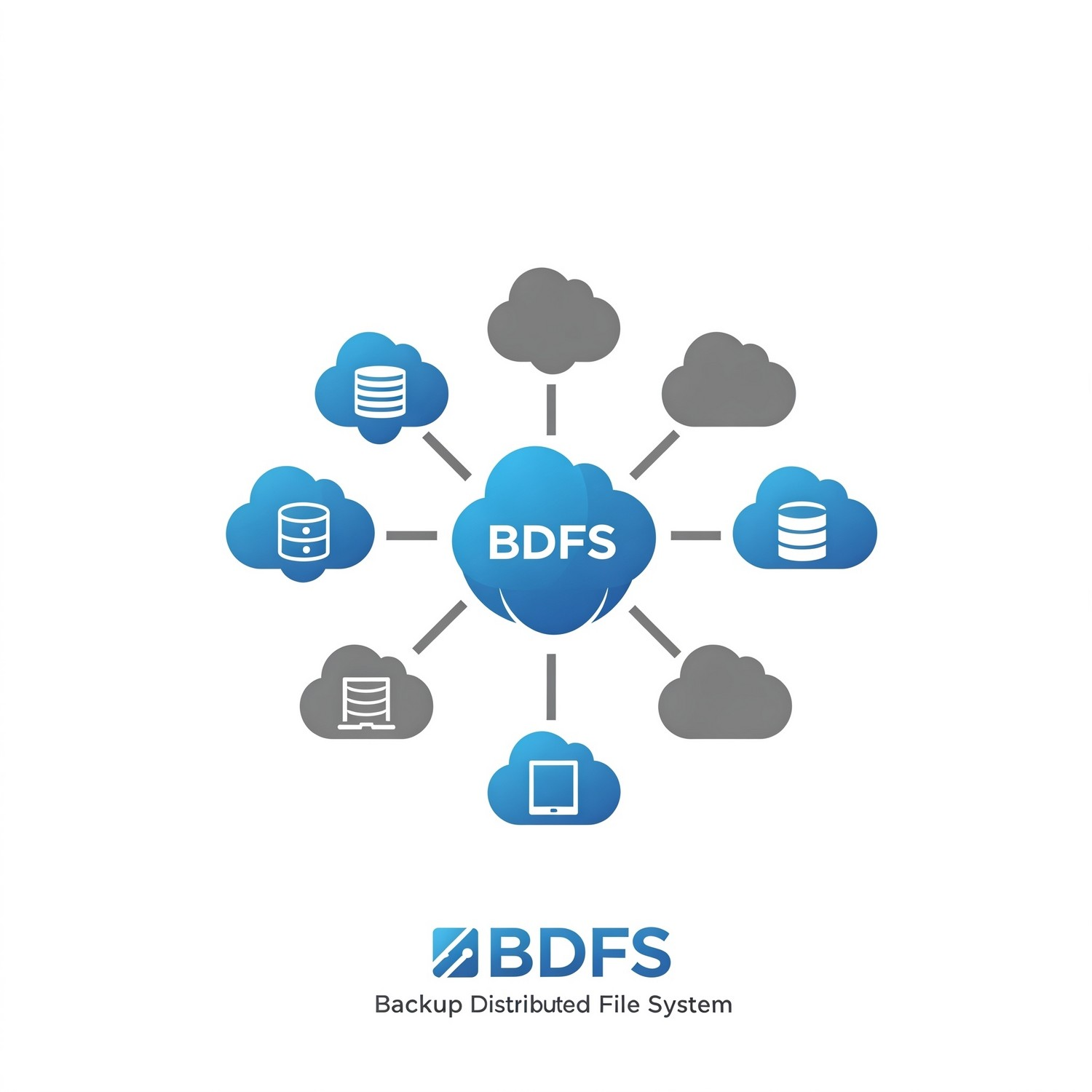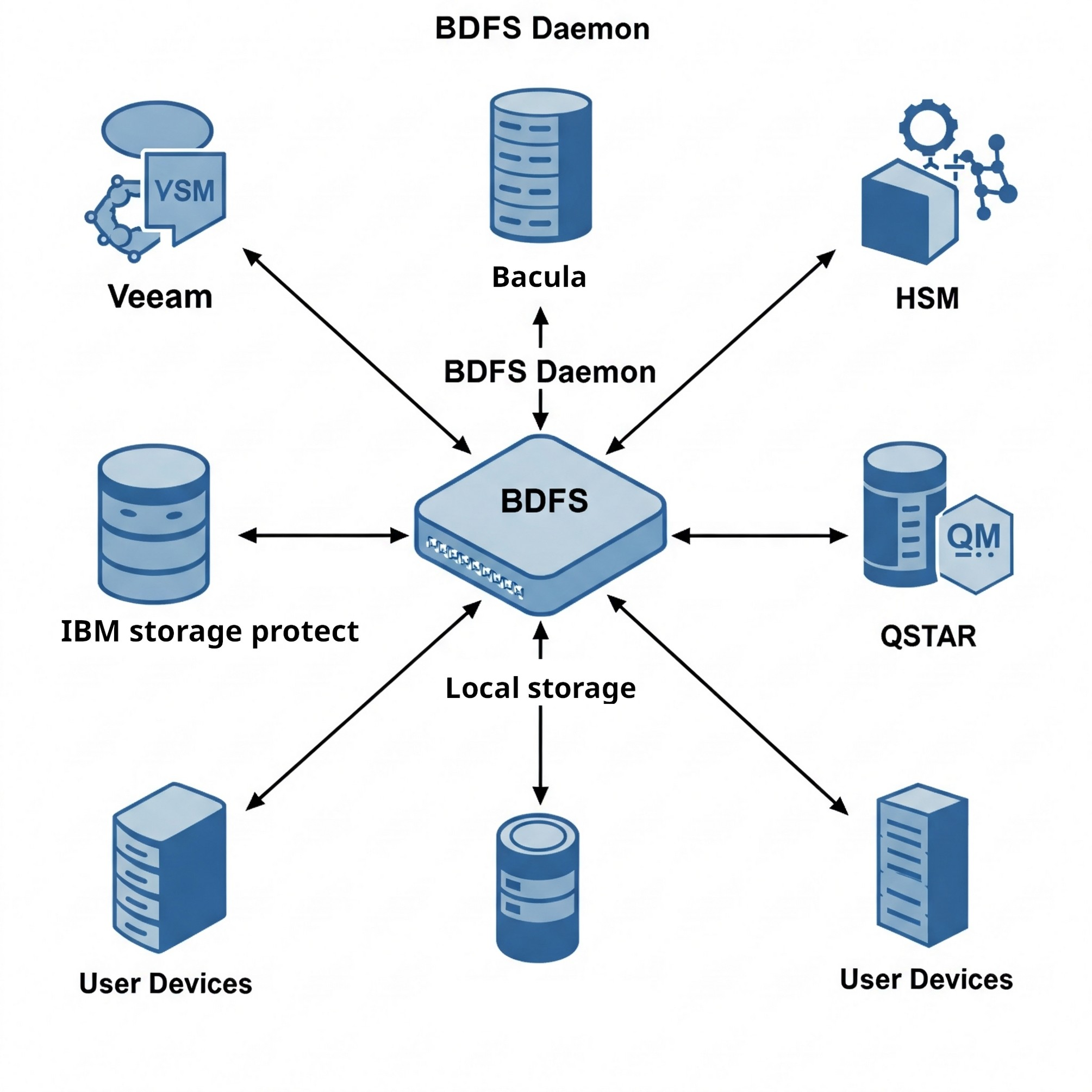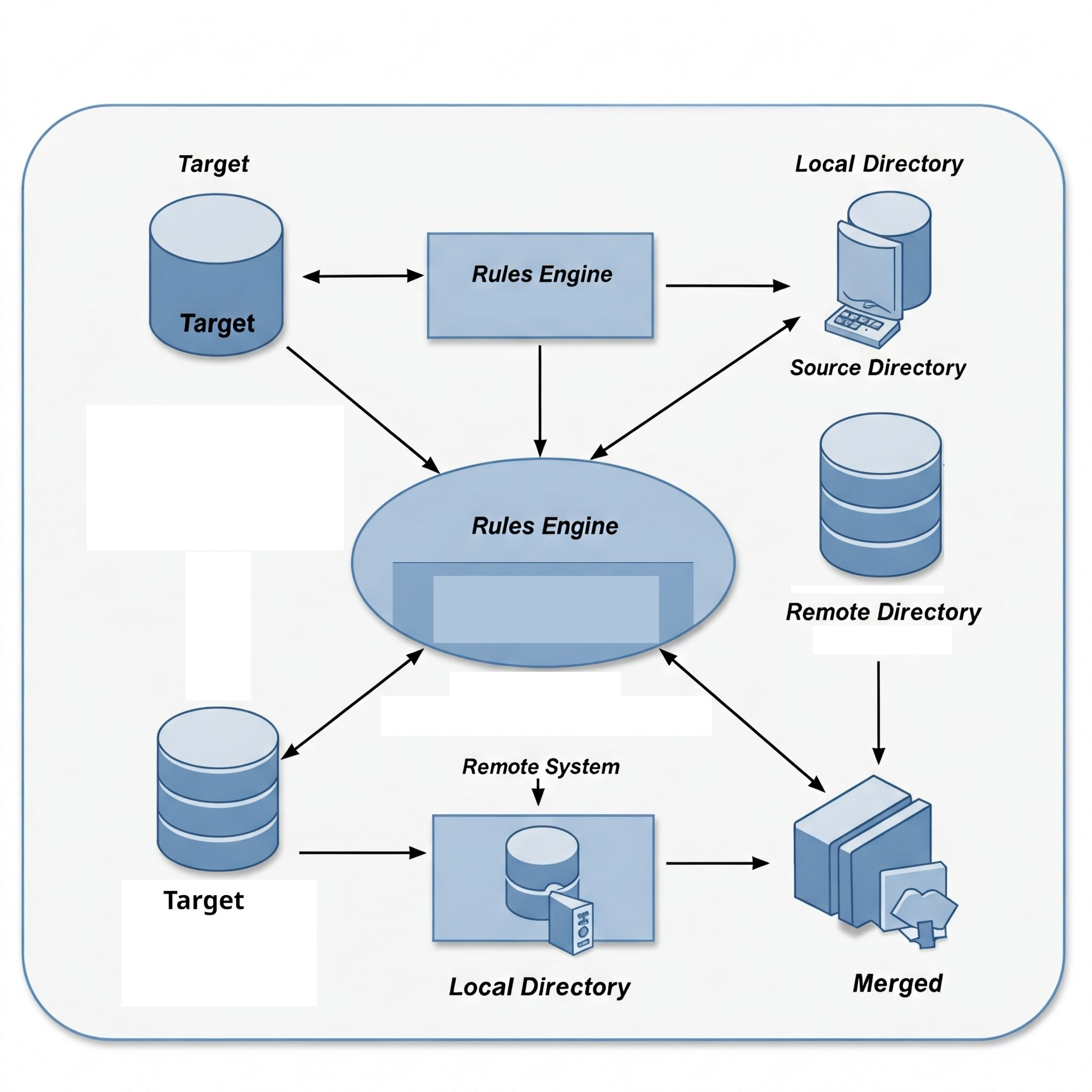BDFS (Backup Distributed File System)
A universal and distributed backup system for complex IT environments.

A universal and distributed backup system for complex IT environments.
BDFS is a universal and distributed backup system, designed to simplify and centralize backup management in complex IT environments.
Whether used as a standalone backup system or integrated with existing solutions, BDFS allows you to abstract the data source from the long-term storage system.

BDFS consists of a daemon that manages backup operations and various utilities that serve to manage the operations performed by the daemon. All operations performed by the daemon are monitored by a series of commands that allow granular control of copying activities.

BDFS can copy or move files from systems to be secured without the use of agents to be installed on remote servers; it simply uses standard protocols already available in various operating systems.
The merged directory is a BDFS feature that allows the end user to continue seeing their files even if they have been moved by BDFS to dedicated archive storage.
In BDFS, we have a structure like this:

In conclusion, BDFS presents itself as a powerful and versatile backup solution, designed to simplify data management in IT environments of all sizes. Its ability to integrate with various existing infrastructures and centralize backup operations makes it a valuable tool for companies seeking efficiency and reliability in protecting their data.
Through features such as the "merged_directory," BDFS ensures transparency of the backup process for the end user, minimizing operational interruptions. Advanced automation, made possible by the definition of granular rules, further optimizes workflow, ensuring that critical data is always protected according to specific business needs.
The scalability of BDFS, combined with its compatibility with a wide range of storage systems, makes it a suitable choice for growing companies that need a backup solution capable of adapting to their future needs. With BDFS, organizations can not only effectively protect their digital assets but also optimize the costs and resources associated with backup management.
Get answers and advice from people you want it from.